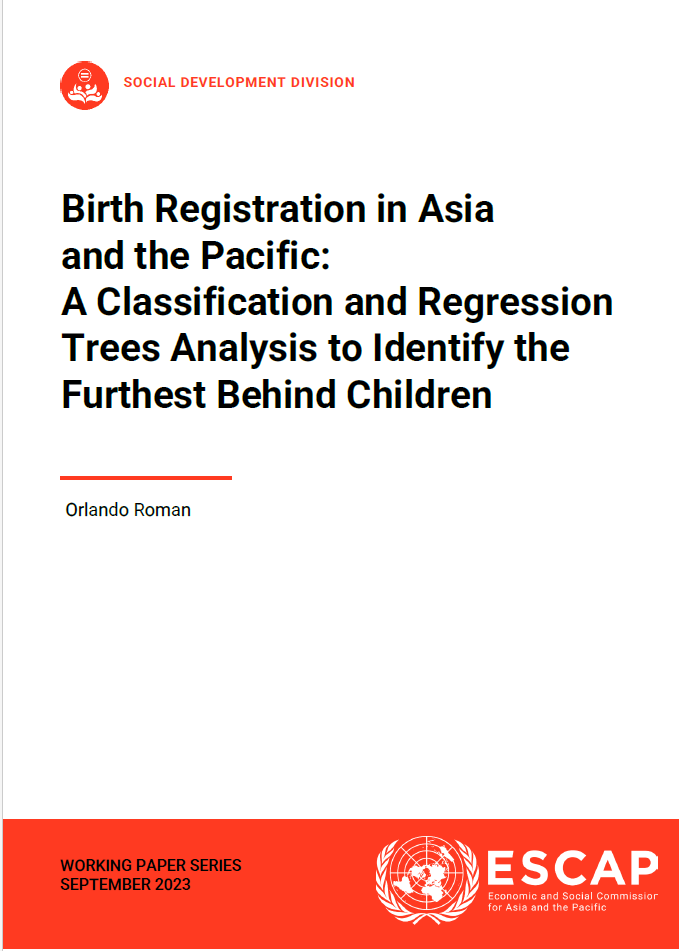Birth Registration in Asia and the Pacific: A Classification and Regression Tree Analysis to Identify the Furthest Behind Children
This paper investigates the determinants of birth registration in Asia and the Pacific. Drawing on data from the Demographic and Health Surveys (DHS) and the Multiple Indicator Cluster Surveys (MICS) from five representative countries in the region, namely Cambodia, Mongolia, Pakistan, Samoa, and Uzbekistan, the paper uses Classification and Regression Trees (CART) to identify the groups of children under 5 years of age who are least likely to have their birth being registered, i.e., the furthest behind groups. Results underscore significant within and cross-country disparities. The wealth of the household where the child currently resides, age of the child, educational attainment of the mother, number of children under 5 years of age in the household, and sex of the child, appear to be the most important characteristics influencing birth registration rates and identifying the furthest behind groups. The paper aims to inform policy making and interventions strategies intended at improving birth registration rates in Asia and the Pacific.


